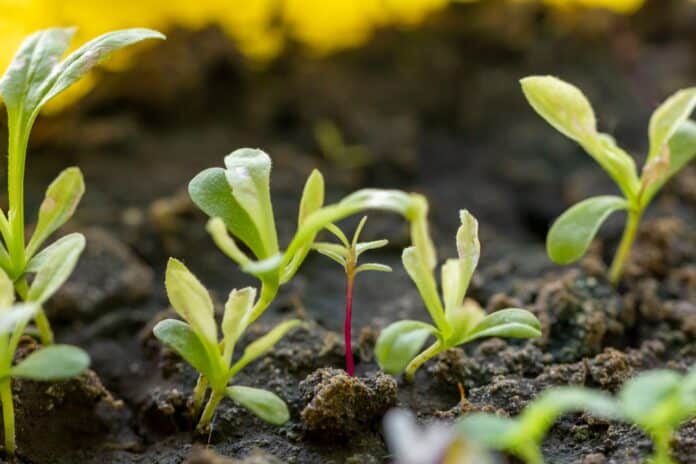Evapotranspiration (ET) quantification is essential for efficient agriculture and long-term groundwater management. The development of intelligent agriculture, a method that uses data and cutting-edge technologies to increase agricultural yields while preserving natural resources, is advanced by a new tool for designing and monitoring irrigation for farms.
A technique for irrigation optimization developed by Stanford University researchers may help farmers use less water.
The tool quickly calculates soil water loss from “evapotranspiration,” a process that includes water evaporation into the atmosphere and plant water intake.
The new Stanford modeling tool operates 100 times faster than state-of-the-art methods of obtaining such estimations while maintaining high levels of accuracy.
The tool has the potential to significantly reduce the time required to develop strategic, efficient irrigation programs and to adjust irrigation on the fly, in near real-time, as weather conditions change.
Weiyu Li, a Ph.D. candidate in energy science and engineering and lead author of a study describing the findings in Water Resources Research, said, “Evapotranspiration is a critical piece of information for designing efficient irrigation systems.”
The study improves the use of smart agriculture, which uses data and modern technology to increase crop yields while conserving natural resources. Li is the first and only Siebel Scholar in the class of 2023 at Stanford Doerr School of Sustainability.
Overall, the study is a step forward for smart agriculture, which uses modern technology and methodologies like big data and the Internet of Things to increase crop yields while conserving natural resources.
Senior study author Daniel Tartakovsky, a professor of energy science and engineering who is also Li’s advisor, said, “With this study, we’re helping to deliver on the promise of smart agriculture to continue sustainably feeding billions of people worldwide and preserving our planet for future generations.”
The vertical-flow assumption, which treats the water delivered during irrigation as only moving straight into the soil, has been a pillar of conventional accounting for evapotranspiration.
The fact that water may (and does) flow horizontally is ignored. Because smart agriculture necessitates the processing of large volumes of data, the vertical-flow assumption has been utilized as a computational shortcut.
According to Li, while this approach is sufficient for some irrigation modeling purposes, the outcomes can be vastly improved.
For truly smart agriculture, notably with “drip irrigation,” the vertical-flow assumption is insufficient. Drip irrigation includes slowly and accurately delivering water to plant root zones, which can be absorbed with minimal evaporative loss. Drip irrigation is commonly used in arid areas, such as much of California, where traditional irrigation systems flood fields, resulting in excessive water consumption.
Smart agriculture technologies also optimize timing, watering plants only when necessary based on weather and development stage criteria.
Tartakovsky said, “Historically, irrigation has largely been divorced from the plant’s needs at a given moment, Drip irrigation, informed by smart agriculture practices, bucks that trend.”
This tool aims to help smart agriculture fulfill its promise to sustainably feed billions of people worldwide while protecting the environment for the coming generations.
Consequently, one of the difficulties of smart agriculture is determining the ideal locations for moisture sensors and drippers. This tool seeks to offer that assistance based on actual and nearly real-time situations, unlike conventional designs, which rely on approximations and assumptions.
This program combines two methods known as an upgraded Kalman filter and a maximum likelihood estimate to guide smart agriculture. Stanford researchers recreated a plot of land measuring approximately five by 33 feet in width to test the accuracy and effectiveness of their approach.
The algorithms begin with predictions based on available measured data and subsequently minimize uncertainties through further observations.
The researcher said, “We plug real data measurements of soil moisture and root water uptake into our model, which improves our understanding of the overall physical system and the algorithm’s performance. Our study is the first to combine this algorithmic approach and apply it to drip irrigation.”
It only took around 10 minutes to determine a precise estimate of the evapotranspiration rate for the test plot of land using the new modeling method. The computational time would have been 100 times longer, or roughly 1,000 minutes, if an upgraded Kalman filter had been utilized alone. This period, which is almost 17 hours long, cannot be used for timely smart agriculture.
He said, “In comparison, an irrigation optimization system based on our modeling tool could be responsive in near-real time to changing conditions.”
The computational time required becomes prohibitive when the objective is to optimize the upfront design of drip irrigation systems for an entire farm, which can cover hundreds of acres.
The researcher said, “You can start to see why irrigation system designers have relied on the simplified vertical-flow method when faced with major installation projects.”
The researchers intend to test how well their modeling tool performs in real-world conditions by deploying it on a working farm.
Tartakovsky said, “We next want to perform a ‘field’ test, literally,” “We look forward to honing our approach further with all the variables presented by real sensors, real drippers, real crops, and real weather.”
This study was funded by the Air Force Office of Scientific Research and the National Science Foundation.
Journal Reference:
- Li, W., & Tartakovsky,etal. Fast and Accurate Estimation of Evapotranspiration for Smart Agriculture. Water Resources Research. DOI: 10.1029/2023WR034535
